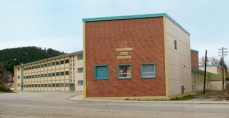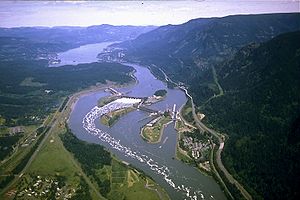Visions in hard copy: Neighbourhoods of Learning committee submits Rossland schools report, plans public meeting
No rest for the weary.
With the next round of Planning for the Future (such an innocuous name for a wholesale inter-community brawl) on hold, a place in the finals of the Aviva funding competition secured, and a detailed proposal to bring the Neighbourhoods of Learning concept to Rossland signed, sealed and delivered to School District 20 one might think it time for a breather at the Visions for Small Schools society.
But one would be wrong. The dedicated group has a community meeting planned for March third to discuss its recently submitted proposal to the school board. Proposals, rather–for there are two Neighbourhoods of Learning scenarios on offer, in addition to a smattering of ideas for district-wide innovation and co-operation in education.
The latter includes proposals to video-link classrooms, thereby increasing program offerings while saving on teacher salaries; a continued or enhanced committment to apprenticeship training and the academy model to attract students from elsewhere and tailor learning to students’ individual strengths; shared school use of specialized facilities and materials; and multi-grade learning to find salary efficiencies.
But the meat of the submission is in the pitch for serious school district support of the Neighbourhoods of Learning concept, a model pushed by the provincial government in recent years to avoid wide scale disposition of underutilized–but still very valuable–publicly-owned school buildings as a response to declining enrollment in most B.C. communities.
Kindergarten to Grade 12 enrollment has fallen by 59,000 students over the last ten years, according to a Ministry of Education spokesperson, who nonetheless stressed that the demographic freefall is expected to flatten in the next three to four years and enrollment to slowly begin increasing again. This is a general, cross-province statistic not adjusted for rural considerations and should be evaluated accordingly.
But the point is generally–from the province’s perspective–better safe than sorry where selling under-used school buildings is concerned.
In 2008, the education ministry adjusted its policy on the sale of school buildings to emphasize the importance of continued school-district ownership of buildings and strongly encourage alternative community uses to raise revenues.
Those would be, to some extent, revenues lost in the transition to per-student funding from block-funding, but spokespersons do not emphasize that type of thing and the funding formula is an old fight beloved of teachers and small communities, but not likely to change soon (if ever).
The actual sale of school buildings is strongly discouraged, rare, and only considered by the minister in exceptional circumstances, according to the ministry representative.
So, the suggested ‘Neighbourhoods of Learning’ are to be created by offering short leases of empty buildings (less than 10 years), or by renting empty space within operating schools to community organizations such as childcare agencies, adult learning, libraries, seniors centres and the like.
Potential local partners cited by the society’s submission include: Rossland Recreation, the Rossland Public Library, Kootenay Danceworks, the Chamber of Commerce, The Rossland Council for Arts and Culture, daycare or after-school programs, the Kootenay Association for Science and Technology, the seniors’ centre and caterers requiring a commercial kitchen.
Two scenarios are floated to make these potential partnerships work, achieve operational savings, and keep K-12 education in Rossland.
Scenario A would move grades K-12 into Rossland Secondary as early as September 2012, though renovations would be required to accommodate the younger students, with Maclean Elementary becoming the Neighbourhood Learning Centre with space for the francophone school and other organizations in 2013. Major renovations at RSS, or a new building for all students with further community space available, would be a goal in the next five years.
Scenario B would see Grades 6-12 housed in RSS, along with the Neighbourhood Learning Centre, while K-5 remain at Maclean in September 2011, and a new or renovated K-12 facility with attached learning centre actioned by the district in the next five years.
The Neighbourhoods of Learning concept has received support from a variety of local businesses, as well as the City of Rossland (which contributed $10,000) and Selkirk College.
The December 15 submission to School District 20 from the Rossland Neighbourhoods of Learning committee can be found on the Visions for Small Schools website.
The Aviva community projects grant winners (between $25,000-$100,000) will be announced Jan 25.
Neither the Neighbourhoods of Learning committee coordinator nor school board chair Gordon Smith could be reached for comment by the Telegraph‘s Wednesday publication deadline.


























